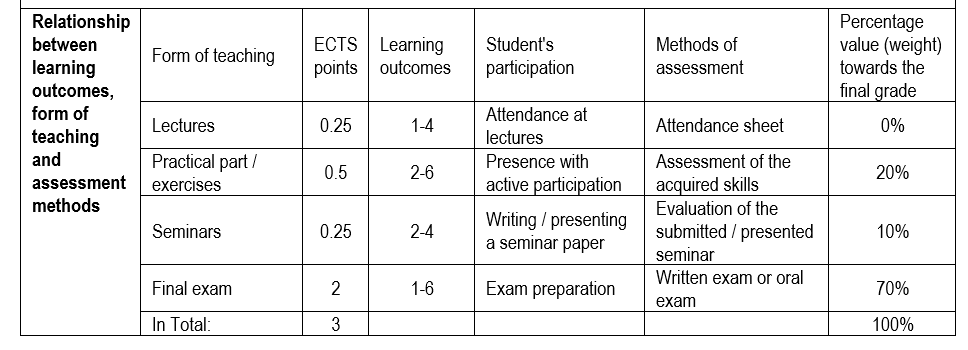Learning the basics of clinical examination, which consists of medical history and physical examination. Complementing the technique of taking anamnesis and its appropriate recording. Learning the basics of physical examination. Learning targeted anamnesis and targeted physical examination and shaping of working diagnosis, learning skills as a supplement and upgrade of the basic goal.
Introduction to propedeutics: presentation of the course, approach to the patient (first contact with the patient). Anamnesis: presentation of some tools (instruments) that do not require special knowledge (ability to listen to patients and ask meaningful questions; inductive, deductive medical history; recognition and description of the main symptoms; family history; history of medication, vegetative functions and vices as well as social history). Physical examination: General status. Head examination. Neck examination. Examination of the chest, breasts and lungs. Examination of the heart (inspection, palpation, pulse evaluation, blood pressure measurement). Heart tone and bruits. Abdominal examination. Examination of the kidneys and male genitals. Examination of joints, muscles and bones. A patient with chest pain. A patient with abdominal pain, a patient with breathing difficulty, a patient with cyanosis, a patient with swelling, a patient with heart problems, a patient with jaundice, a patient with fever, a patient with enlarged lymph nodes, a patient with impaired consciousness, a patient with bleeding, a patient with diseases of the extremities.
Required course materials:
1. Metelko Ž.: Internistička propedeutika, Medicinska naklada, Zagreb,1999.god.
2. Včev A, Burton N: Objektivno strukturirano kliničko ispitivanje - OSKI, Medicinski fakultet Osijek, 1. hrvatsko izdanje, 2015. god..
Upon completion of this course, students will be able to:
- determine the parts, characteristics and significance of the anamnesis and physical examination, as well as the symptoms and signs of the disease;
- assess the severity of the clinical presentation with regard to the symptoms and signs of the disease;
- predict clinical conditions with regard to a set of symptoms and signs and make the working diagnosis;
- critically evaluate the elements from the anamnesis and physical examination and recommend further diagnostic procedures;
- self-evaluate the procedure of taking anamnesis, physical examination, measurement of vital signs and medical procedures;
- measure basic laboratory indicators and vital parameters.



